Music: Yanaya (Narran): Andrew Howes
Melodic Exploration: Melody and Counter Melodies
Main theme: ‘Go to the bend in the river’ – learning the melody phrase by phrase
Exercise: Speak the words and feel the shape of the words in your mouth
Go to the bend in the river, that’s where the people we lost will be found,
Go to the black sand where the tracks lead us, cut off the waterway deep underground.
- Sing the melody on words – the vowels should be bright and clear (vertical height/space in your mouth); use sustained consonant opportunities to connect the vowels to the consonants to create an unbroken vocal line.
Exercise: Tongue roll or lip trill the melody and allow the air to flow freely
Questions:
- Can to get through all the phrases without running out of breath?
- Are you taking a deep enough breath before each phrase? Initial intake of breath should be half the length of the first phrase, say 2 sec intake.
Exercises: Sing the melody again on ‘ng’ to assist with producing a forward focused sound production
Questions:
- Is it easier to sing on ‘ng’?
- Can you sense the extra buzzing in your nose?
- Word painting – find ways to colour and use the vowels/consonants to create interest and artistic qualities across the phrase or on specific words. This can be done by:
- Shaping a word with your breath e.g. ‘people we lost’ – ensure you’re not over stressing a weak syllable
- Bright forward focused vowels e.g. ‘ee’ and ah’s in ‘river’
- Crisp and clever consonants e.g. ‘bend’ and ‘black’; ‘tracks’ and ‘underground’ – make them sound like their meaning
Counter melody A: ‘Yanaya, yanaya, go to the river’
- ‘Yanaya’ is an indigenous word in the Gamilaroi language meaning ‘go’.
- Andrew has cleverly used the ‘ah’ vowels and sung consonants in this word and by sustaining it on one note it creates a distinct colour and sense of insistence to match the meaning of the word.
Exercise: Practice sustaining this word on D in your lower register and enjoy the repetition of the ‘ah’ vowels and use the ‘b’s and ‘n’ by sustaining these voiced consonants to smoothly connect the word together in a legato phrase.
Use the initial ‘y’ of the word to articulate and annunciate the word clearly.
Speed up the pattern but don’t lose the natural brightness of the vowel and enjoy the rhythmic pattern Andrew has set for this word – this is what we call word painting!
- This counter melody, set in the upper parts (soprano and alto parts) and lower parts (tenor and bass parts), uses half the English text (from the main theme) interchangeably as the idea develops so we hear different parts of the text from the main theme interspersed with the indigenous word:
- Tenori/Bassi – the melodic material starts with ‘Yanaya, yanaya, go to the river’
- Soprani/Alti – similarly, the melodic material starts with ‘Yanaya, yanaya, go to the river’ NOTE: when this pattern is being sung by Soprani/Alti, the Tenori/Bassi sing the opposite ‘Go to the bend, yanaya, yanaya’ then the parts switch over and the Soprani/Alti sing ‘Go to the bend, yanaya, yanaya’ starting on a top D.
Exercise: Practice singing both these variations on different pitches to feel how they can be sung beautifully and well supported in different parts of your range.
- Start on the low D then try the same pattern on the G, four steps higher than D – for the upper voices note this will be sung in our chest voice and there is a particular earthy quality that can be achieved – remember the exercise which is an extension of our speaking voice – don’t push the sound, let it resonate naturally and use the breath to sustain the phrase evenly.
- For upper voices you can try singing this on the top D which is an octave above the original D you started on, eight notes higher.
- Remember when singing higher in your range you need even more breath support – use the vowels and consonants to connect the breath with your vocal production and always create a smooth phrase.
Counter melody B: ‘Baanagay, baanagay, baanagay, baanagay, run, run, run, run’
- ‘Baanagay’ is an indigenous word in the Gamilaroi language meaning ‘run’.
- Andrew again has cleverly used the ‘ah’ vowels and sung consonants in this word and by sustaining it on one note it creates a distinct colour and sense of insistence to match the meaning of the word.
Exercise: Practice sustaining this word on D in your lower register and enjoy the repetition of the ‘ah’ vowels and ensure you have good vertical space in your mouth to produce the best quality ‘ah’ vowel; then use the ‘b’, ‘n’, ‘g’ and ‘y’s in this great word by sustaining these voiced consonants to smoothly connect the word together in a legato phrase.
Use the initial ‘b’ of the word to articulate and annunciate the word clearly as it repeats (it is sung 4 times).
Speed up the pattern but don’t lose the natural brightness of the vowel and enjoy the rhythmic pattern Andrew has set for this word – great use of word painting!
- The second part of this counter melody B is 4 x ‘run’ and is again made up of bright ‘ah’ vowels and voiced consonants ‘r’ and ‘n’ – this is a great rhythmic pattern and we can use the sustained qualities of this word to deliver the vocal lines assisted by the energetic rhythm of the setting. Again, use the initial ‘r’ of each ‘run’ to articulate the rhythm as well as connect the four ‘run’s together to make a smooth vocal line as the notes step up and back down again.










